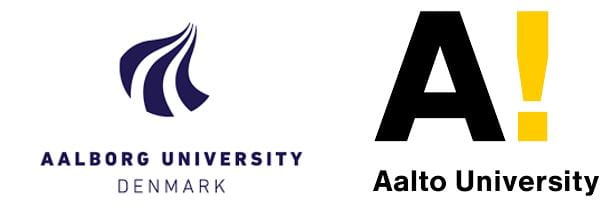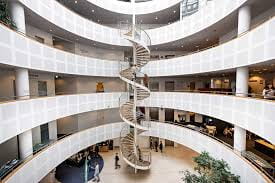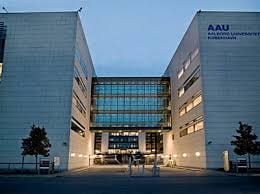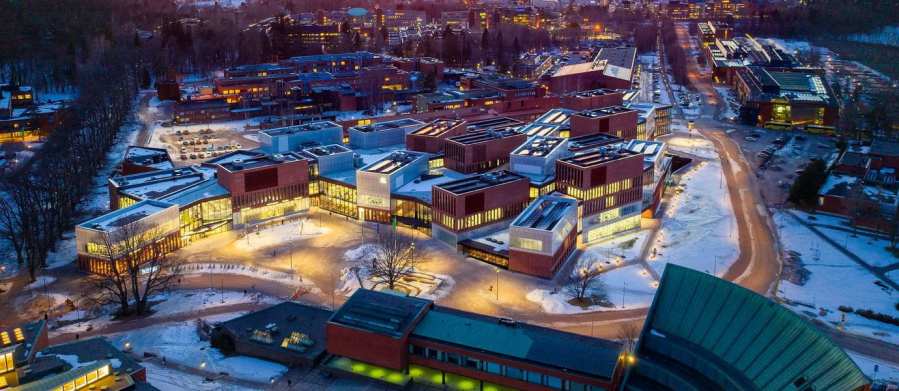I saw a job  opening the other day at Aalto University and it led
opening the other day at Aalto University and it led  me to wonder if this was not the first alphabetical university out of over thousands in the world. I wondered if this was my aardvark moment, the day I discovered the first alphabetical animal in the world; just before the aardwolf (trust me, this is a real animal).
me to wonder if this was not the first alphabetical university out of over thousands in the world. I wondered if this was my aardvark moment, the day I discovered the first alphabetical animal in the world; just before the aardwolf (trust me, this is a real animal).
Then I learned that Aalto University was my aardwolf moment because there was one more university earlier than Aalto… Aalborg University (see below).

I previously featured Ouachita Baptist University on this site, but a double vowel at the start is on an entirely new level of unique. There are a few universities whose initials result in two vowels in the abbreviated name (4 in Estonia starting with EE and 2 in India starting with II, but no other university names starting with a double vowel (other than Aarhus University, a third Aa named university).
I am far enough down this rabbit hole now to mention that technically, you could argue that a university which starts with a number could come before the letters Aa. Believe it or not, there is one university in France that is named 3iL School of Engineering (which stands for the Institute of Engineering Information of Limoges (but Engineering in French is spelled Ingenieurs, thus the 3 I’s and L for Limoges).

Now for a zoom in to Aalborg University. Aalborg University is one of the top universities in Denmark. Established in 1974, Aalborg is located in the city of Aalborg in Northern Denmark. Aalborg is the 4th largest city in Denmark with 143,000 people. Aalborg means “the fort by the stream” and the city has ruins dating back to the 6th century Iron Age and the 9th and 11th century Viking Age.
 Aalborg is officially recognized by the Uddannelses-og Forskningsministeriet (Ministry of Higher Education and Science of Denmark) and has ~17,000 students. The university differentiates itself from the older and more traditional Danish universities with its focus
Aalborg is officially recognized by the Uddannelses-og Forskningsministeriet (Ministry of Higher Education and Science of Denmark) and has ~17,000 students. The university differentiates itself from the older and more traditional Danish universities with its focus on interdisciplinary, inter-faculty studies; an experimental curriculum based on an interdisciplinary basic course with subsequent specialization; a pedagogical structure based on problem-centered, real-life projects of educational and research relevance – which internationally has become known and recognized as The Aalborg Model, which is also the name of a book on the model published in 2004. With the problem-based, project-organized model, semesters at AAU are centered around complex real-life problems which students attempt to find answers to in a scientific manner while working together in groups.
on interdisciplinary, inter-faculty studies; an experimental curriculum based on an interdisciplinary basic course with subsequent specialization; a pedagogical structure based on problem-centered, real-life projects of educational and research relevance – which internationally has become known and recognized as The Aalborg Model, which is also the name of a book on the model published in 2004. With the problem-based, project-organized model, semesters at AAU are centered around complex real-life problems which students attempt to find answers to in a scientific manner while working together in groups.

In 2021, The Times Higher Education Impact Rankings ranked Aalborg University number 6 in the world, out of 1,117 universities from 94 countries/regions, against the United Nations’ Sustainable Development Goals. That is the number 1 university in the European Union. Among universities under 50 years old, Aalborg is 25th in the world.

Aalto University, #2 alphabetically, is ranked 28th, right behind Aalborg in the same world ranking of universities under 50 years old. It was only founded in 2010 from the merger of Helsinki University of Technology (founded in 1849), the Helsinki School of Economics (founded in 1904), and the University of Art and Design Helsinki (founded in 1871).

Aalto University is located in Espoo, Finland. The institution has ~20,000 students. Around 30% of staff are from abroad. Courses are offered across schools of arts, design and architecture; chemical technology; business; electrical engineering; engineering; and science.

The university describes itself as committed to “identifying and solving grand societal challenges and building an innovative future”. The name of the institution is a tribute to the life and work of Finnish architect Alvar Aalto. The core of the campus was designed by him. Aalto University’s operations showcase Finland’s experiment in higher education.
 The Aalto Design Factory, Aalto Ventures Program and Aalto Entrepreneurship Society (Aaltoes), among others, drive the university’s mission for a radical shift towards multidisciplinary learning and have contributed substantially to the emergence of Helsinki as a hotbed for startups. Aaltoes is Europe’s largest and most active student run entrepreneurship community that has founded major concepts such as the Startup Sauna accelerator program.
The Aalto Design Factory, Aalto Ventures Program and Aalto Entrepreneurship Society (Aaltoes), among others, drive the university’s mission for a radical shift towards multidisciplinary learning and have contributed substantially to the emergence of Helsinki as a hotbed for startups. Aaltoes is Europe’s largest and most active student run entrepreneurship community that has founded major concepts such as the Startup Sauna accelerator program.
An integral part of many student traditions play the brightly colored overalls worn to many events. The color of the overall signals what the student studies (e.g. the economy students are recognized from dollar green overalls). The students of technology (teekkarit) are especially noticeable, as they wear a distinctive hat with a tuft on many occasions. Technology students are also famous for, and Finland’s leading practitioners of, student pranks (jäynä), similar in principle to MIT hacks. Their most widely publicised stunt took place in 1961, when a team of students smuggled a statue of Paavo Nurmi onto the 300-year-old wreck of Regalskeppet Vasa just days before its lifting from the bottom of the sea.
events. The color of the overall signals what the student studies (e.g. the economy students are recognized from dollar green overalls). The students of technology (teekkarit) are especially noticeable, as they wear a distinctive hat with a tuft on many occasions. Technology students are also famous for, and Finland’s leading practitioners of, student pranks (jäynä), similar in principle to MIT hacks. Their most widely publicised stunt took place in 1961, when a team of students smuggled a statue of Paavo Nurmi onto the 300-year-old wreck of Regalskeppet Vasa just days before its lifting from the bottom of the sea.

The most noticeable student event of the first year of the university was Aalto on Tracks, where a group of 100 students came together to rent a private train which they traveled 6,200 miles from Helsinki to the Shanghai Expo enjoying multidisciplinary talks and workshops on the way. The event was such a success that the follow-up Aalto on Waves is planned to arrange a trip by boat to South America.

